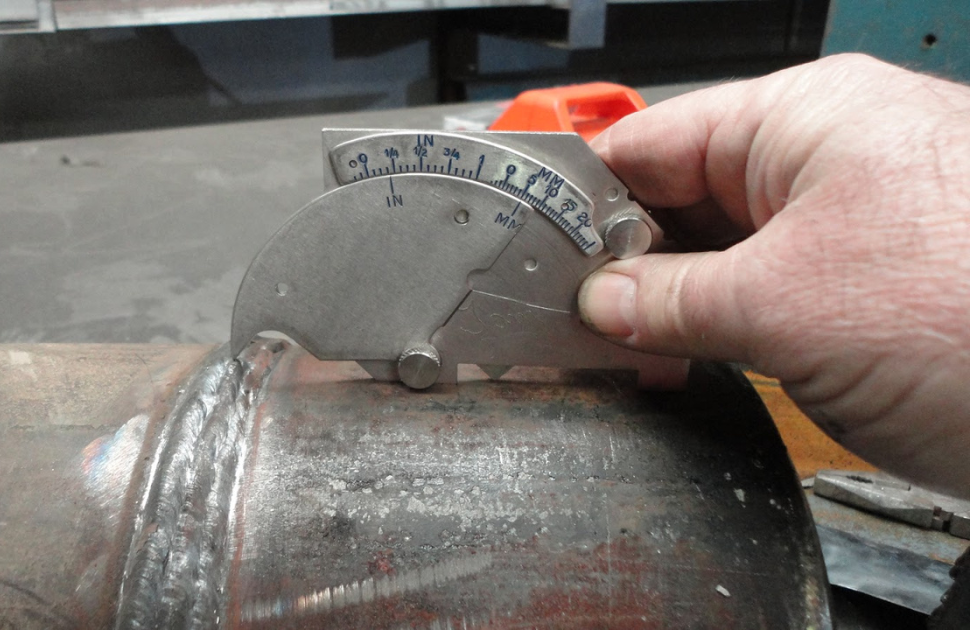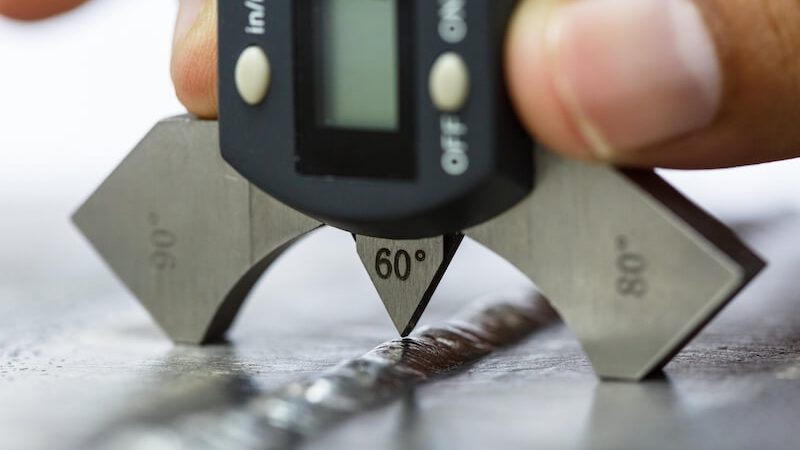Exactly How Welding Evaluation Works: An In-Depth Evaluation of Techniques, Criteria, and the Role of Assessors in Making Sure Architectural Honesty and Safety
Welding evaluation is an important element in the building and production sectors, where the integrity of welded joints is critical to security and reliability. Different approaches, consisting of non-destructive and visual testing techniques, are used to find potential imperfections that might compromise architectural efficiency - Houston Welding Inspection. Examiners are tasked with not just examining weld high quality versus rigid criteria yet additionally analyzing intricate codes and standards. As we explore the details of this occupation, the obstacles encountered by assessors in keeping safety and security and conformity will certainly disclose a deeper understanding of their vital function in safeguarding infrastructure.
Significance of Welding Assessment
Welding evaluation is crucial in making sure the honesty and safety of bonded frameworks, with research studies showing that approximately 70% of architectural failings can be traced back to poor welding practices. This underscores the importance of organized examination processes throughout the welding lifecycle, from preparation to conclusion. Effective inspection not only determines defects before they rise into substantial issues however likewise guarantees conformity with industry criteria and regulations.

The role of welding assessors extends past mere quality assurance; they are important in protecting public security and minimizing responsibility for organizations. By implementing rigorous examination protocols, business can discover problems such as incomplete blend, splits, or too much porosity, which can endanger the overall stamina of a bonded joint. In addition, continuous training and certification of assessors add to the total top quality guarantee in welding procedures, cultivating a society of safety and quality.
Furthermore, welding evaluation plays an essential role in keeping operational efficiency. Identifying problems early while doing so assists in prompt rehabilitative activities, reducing pricey rework and job hold-ups. Inevitably, a robust evaluation structure functions as a foundation for reputable and resilient bonded frameworks, guaranteeing they satisfy both functional and safety requirements.
Usual Inspection Methods
Just how can one ensure the high quality of bonded joints throughout the inspection procedure? The execution of numerous examination methods is vital in examining weld honesty and identifying potential defects. Common approaches include Visual Assessment (VT), which is often the first line of protection, allowing inspectors to find surface area flaws such as fractures, porosity, or incomplete fusion by aesthetically examining the welds.
Ultrasonic Checking (UT) is another commonly utilized method, employing high-frequency acoustic waves to identify internal defects within the weld. This approach is especially reliable for detecting problems that are not visible to the naked eye. Radiographic Checking (RT) makes use of X-rays or gamma rays to develop photos of the weld, enabling the recognition of volumetric problems, such as additions or gaps.
Magnetic Bit Testing (MT) and Fluid Penetrant Evaluating (PT) are additionally prominent approaches, concentrating on surface flaws. MT relies on magnetic areas to expose surface area and near-surface discontinuities, while PT involves using a liquid color to highlight defects. Each of these approaches offers an unique function, making sure the extensive assessment of welded joints and safeguarding architectural integrity and safety and security.
Criteria for Assessing Welds
The analysis of welds is led by a collection of well-known criteria that make certain both capability and security in welded frameworks. These criteria encompass various aspects, including weld size, account, and penetration, which have to comply with defined standards. Conformity with market codes, such as those established by the American Welding Culture (AWS) or the American Culture of Mechanical Designers (ASME), is essential in establishing the acceptability of a weld.

Weld metallurgy plays a crucial role; the examination considers the blend top quality between base and filler products, as well as heat-affected areas. Finally, the general mechanical residential or commercial properties, consisting of tensile stamina and ductility, must fulfill the requirements developed for the details application. Jointly, these standards make sure that welds not only fulfill aesthetic criteria yet additionally perform accurately under functional conditions.
Function of Welding Inspectors
A welding examiner's know-how is essential in making certain the integrity and quality of welded structures. These experts play a critical duty in the fabrication and building process by verifying that welding operations abide by developed criteria and specs. Their duties incorporate a thorough variety of jobs, consisting of aesthetic examination of welds, examining welding documentation, and conducting non-destructive screening (NDT) techniques such as ultrasonic or radiographic screening to recognize issues.
Welding examiners are likewise in charge of analyzing welding codes and requirements, making sure that the welders are qualified and that the products made use of satisfy the required needs - Houston Welding Inspection. They should keep precise records of inspections, which offer as documentation of compliance and quality control. Additionally, these assessors usually work together with engineers and task supervisors to attend to any type of concerns that develop during the welding procedure, offering suggestions for corrective activities when needed.
In enhancement to technical skills, reliable interaction is vital, as welding examiners must communicate findings plainly to stakeholders and assist in training and assistance for welders. Eventually, their function is important to preserving security and integrity in welded frameworks, contributing dramatically to the overall success of construction tasks.

Challenges in Welding Examination
What obstacles do welding examiners encounter in their critical duty? The intricacies of modern welding techniques and materials present substantial difficulties for assessors charged with making sure conformity with safety and security standards and architectural stability. One key barrier is the rapid development of welding modern technology; inspectors should consistently update their understanding and skills to remain efficient. This recurring education is important to comprehending new products and procedures, which can try these out differ extensively in features and needs.
Additionally, inspectors usually come across variations in worksite conditions that can impede inspection procedures. Elements such as environmental problems, access, and the physical state of the bonded frameworks can complicate extensive examinations. Time restraints enforced by task schedules can additionally pressure inspectors, possibly impacting the thoroughness of their evaluations.
Additionally, the subjective nature of some evaluation techniques can bring about disparities in assessments. Visual assessments might differ based on the inspector's experience and perspective. To minimize these obstacles, the adoption of sophisticated non-destructive screening strategies and standard methods ends up being essential - Houston Welding Inspection. Inevitably, conquering these obstacles is essential for guaranteeing the safety and integrity of bonded frameworks throughout various markets.
Verdict
Welding inspection is vital for preserving structural integrity and safety in various industries. Ultimately, efficient welding examination adds significantly read to mitigating dangers and improving the general dependability of bonded frameworks.
Welding examination is a vital element in the building and construction and production markets, where the stability of bonded joints is critical to security and integrity.Welding examination is crucial in ensuring the honesty and security of welded frameworks, with research studies indicating that up to 70% of architectural failings can be traced back to inadequate welding methods. Their duties encompass an extensive array of tasks, consisting of visual examination of welds, evaluating welding paperwork, and conducting non-destructive screening (NDT) methods such as radiographic or ultrasonic screening to identify flaws.
Welding inspectors are additionally accountable for interpreting welding codes and standards, ensuring that the my company welders are certified and that the materials made use of satisfy the required needs. Eventually, effective welding evaluation adds considerably to mitigating risks and improving the overall dependability of welded frameworks.
Comments on “Reliable Houston Welding Inspection for Compliance and Safety Standards”